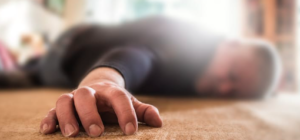
How to Prevent A Fall At Home.
Once a loved one has had one you will want to know to prevent a fall at home. If you read this post you may be able to reduce the risk of a first or subsequent fall.
The Stats.
Falls can kill. It’s a stark reality and alarming. Falls can at the least knock a person’s confidence and worst leave them requiring a replacement hip.
Falls cost the NHS and Social Care Sector
Falls and fractures are a common and serious health issue faced by older people in England. People aged 65 and older have the highest risk of falling; around a third of people aged 65 and over, and around half of people aged 80 and over, fall at least once a year. Falling is a cause of distress, pain, injury, loss of confidence, loss of independence and mortality.
For health services, they are both high volume and costly.
In terms of annual activity and cost:
- the Public Health Outcomes Framework (PHOF) reported that in 2017 to 2018 there were around 220,160 emergency hospital admissions related to falls among patients aged 65 and over, with around 146,665 (66.6%) of these patients aged 80 and over
- falls were the ninth highest cause of disability-adjusted life years (DALYs) in England in 2013 and the leading cause of injury
- unaddressed fall hazards in the home are estimated to cost the NHS in England £435 million
- the total annual cost of fragility fractures to the UK has been estimated at £4.4 billion which includes £1.1 billion for social care; hip fractures account for around £2 billion of this sum
- short and long-term outlooks for patients are generally poor following a hip fracture, with an increased one-year mortality of between 18% and 33% and negative effects on daily living activities such as shopping and walking
- a review of long-term disability found that around 20% of hip fracture patients entered long-term care in the first year after fracture
- falls in hospitals are the most commonly reported patient safety incident with more than 240,000 reported in acute hospitals and mental health trusts in England and Wales


